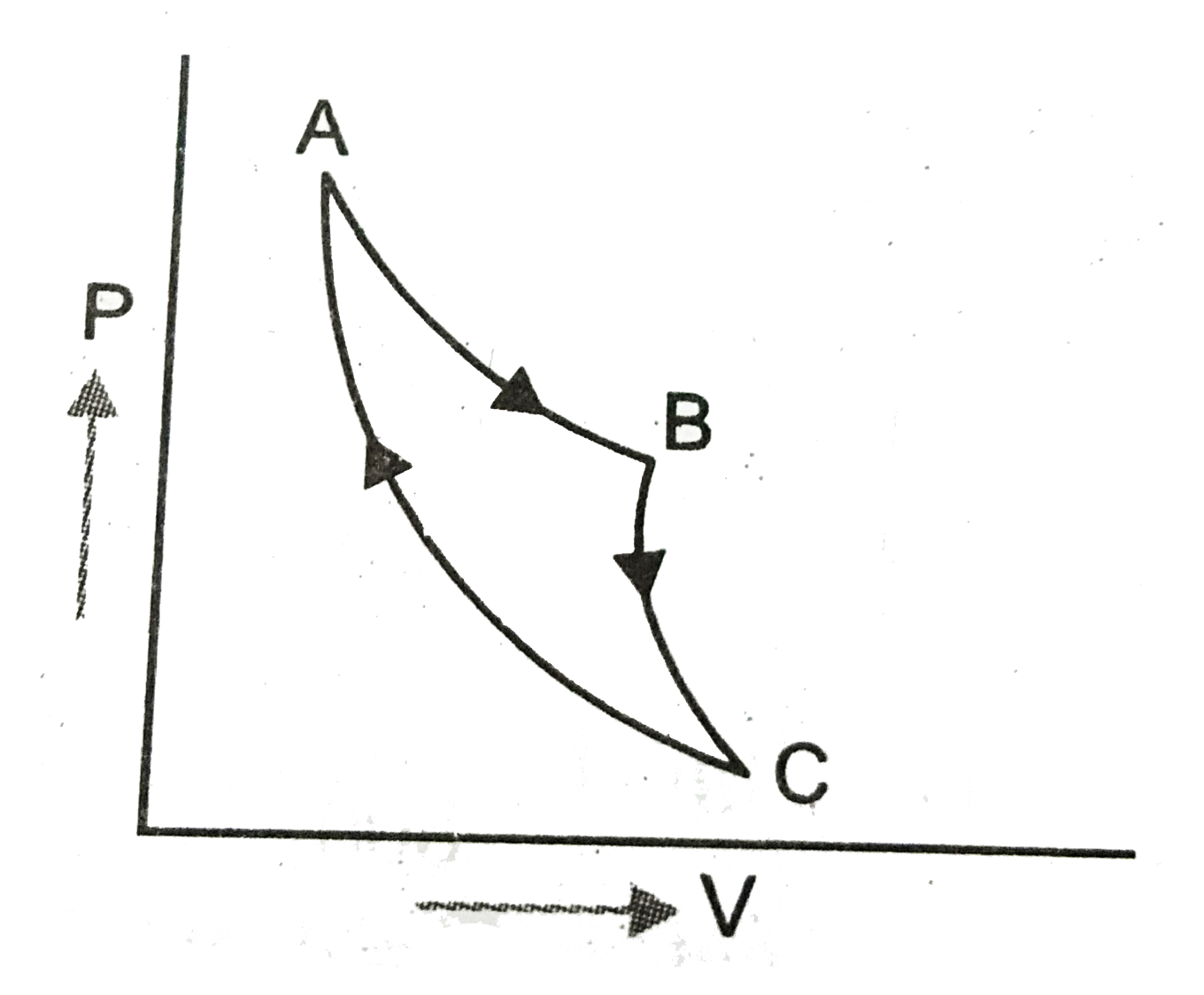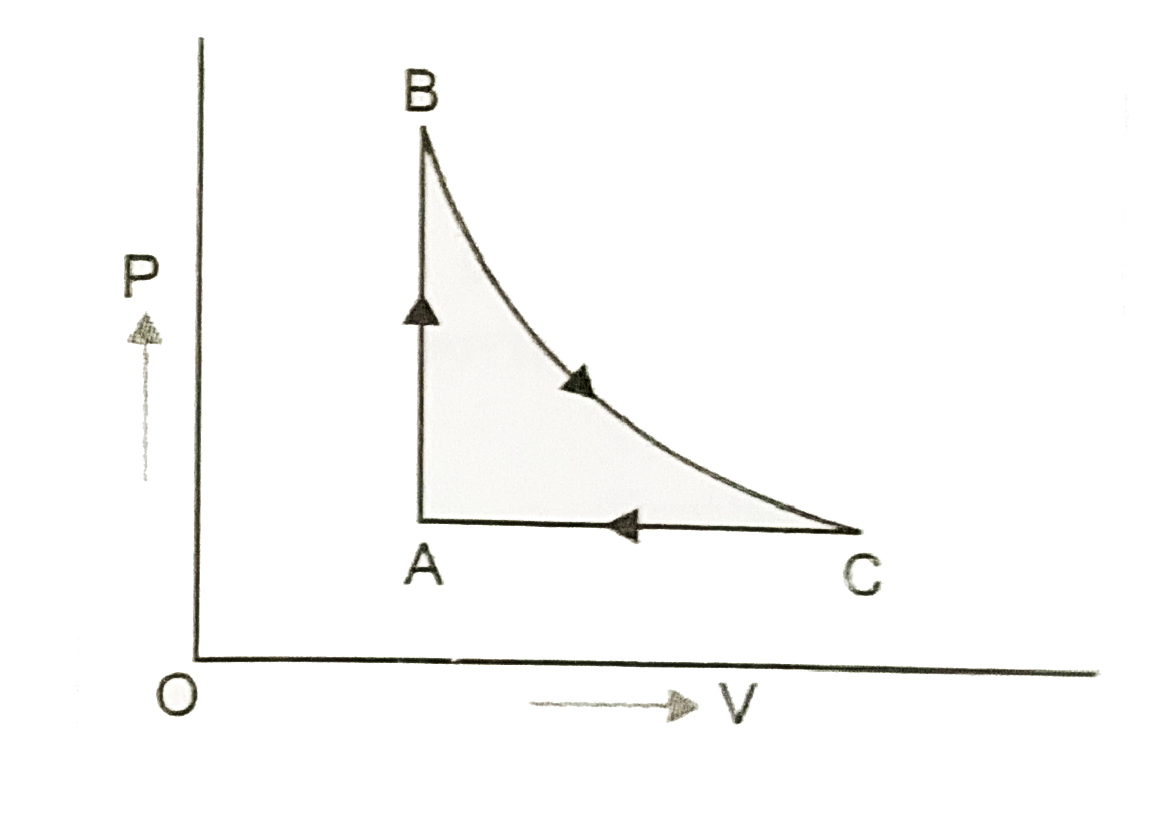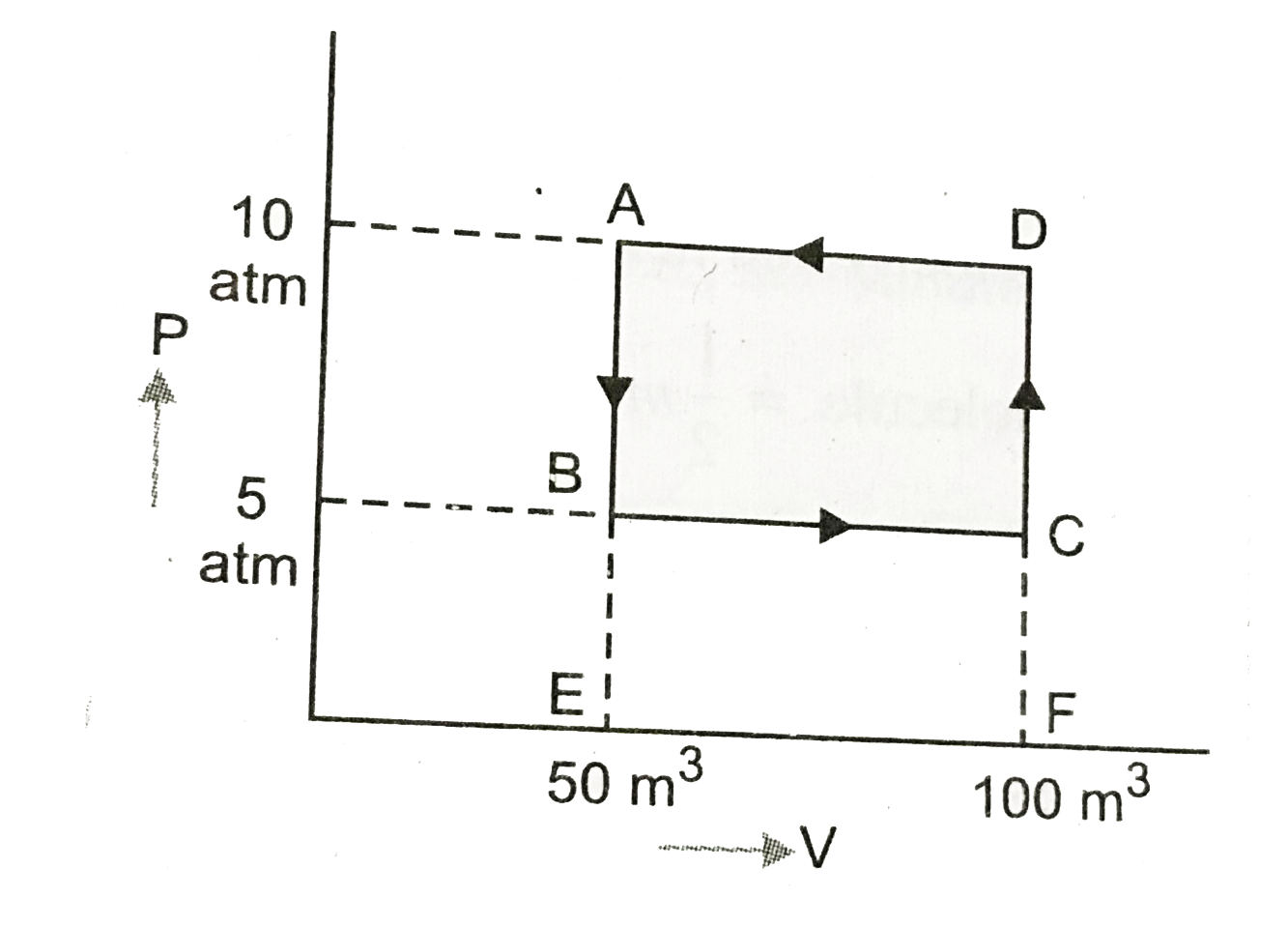Complete Solutions to Advanced problems for competitions of chapter THERMODYNAMICS of Class 11 book with complete answers and questions
| Class 11 | PHYSICS |
| Chapter | THERMODYNAMICS |
| PRADEEP | Advanced problems for competitions |
| Number Of Questions | 10 |
| Academic Year | 2023-24 |
An ideal gas expands isothermally along AB and does `700J` of work. How much heat does the gas exchange along AB? The gas then expands adiabarically along BC and does `400J` of work. When the gas returns to A along CA, it exhausts `100J` of heat to the surroundings. How much work is done on the gas along this path?
 04:45View Solution
04:45View SolutionAn ideal gas having initial pressure P, volume V and temperature T is allowed to expands adiabatically until its volume becomes 5.66V while its temperature falls to T/2.
(i) How many degrees of freedom do the gas molecules have?
Obtain the work done by the gas during the expansion as a function of the initial pressure P and volume V.04:17View SolutionWhat is a polytropic process, Obtain expressions for work done in a polytropic process and specific heat of gas in such a process.
05:50View SolutionTwo Carnot engines are operated in succession. The first engine receives heat from a source at `T=800K` and rejects to sink at `T_(2)K`. The second engine receives heat rejected by the first engine and rejects to another sink at `T_(3)= 300K`. If work outputs of the two engines are equal, then find the value of `T_(2)`.
03:13View SolutionOne mole of a monoatomic gas is mixed with three moles of a diatomic gas. What is the molecular specific heat of mixture at constant volume? `R=8.31 J mol^(-1) K^(-1)`.
02:01View SolutionAt `27^@C` two moles of an ideal monoatomic gas occupy a volume V. The gas expands adiabatically to a volume 2V. Calculate (i) the final temperature of the gas, (ii) change in its internal energy, and (iii) the work done by the gas during this process.
03:26View SolutionThe pressure of one gram mole of a monoatomic gas increases linearly from `4xx10^(5)N//M^(2)` to `8xx10^(5)N//m^(2)`. Calculate
(i) Work done by the gas,
(ii) increase in internal energy, (iii) amount of heat supplied,
(iv) molar heat capacity of the gas.
Take `R=8.31J mol e^(-1)K^(-1)`.05:43View Solution(Figure) shows that two `P-V` curves AB and BC for a gas: one is for isothermal process and other is for adiabatic process.
(i) Which curve denotes which change and why?
(ii) How much work will be done by the gas in change AB? Will the internal energy of gas increase or decrease? How much heat will the gas give or take?
(iii) Discuss all the above things in change BC.06:31View SolutionGas with in a chamber, passes through the cycle shown in (figure). Determine the net heat added to the system during process AB is `Q_(AB)= 20J`. No heat is transferred during process BC and net work done during the cycle is `15J`
 02:27View Solution
02:27View SolutionOne mole of an ideal gas is taken through the cyclic process ABCDA, as shown in (figure). Using the graph, calculate
(i) Work done in the processes `ArarrB, BrarrC, CrarrD and DrarrA`
(ii) Work done in complete cycle ABCDA
(iii) Heat rejected by the gas in one complete cycle.
 04:23View Solution
04:23View Solution
Advanced problems for competitions questions and complete solutions for chapter THERMODYNAMICS of PRADEEP PHYSICS (HINGLISH) of Class 11
All Exercises from PRADEEP Class 11 PHYSICS THERMODYNAMICS
- Advanced problems for competitions
- Assertion- Reason Type Questions
- Conceptual Problems
- Curiosity Question
- Higher order thinking skills
- Interger Type questions
- Long answer questions
- Long answer questions(NCERT)
- Multiple choice questions
- Multiple choice questions (NCERT)
- Multiple choice questions.
- NCERT Questions
- Problems for practice
- Sample problems
- Short answer questions
- Short answer questions(NCERT)
- Solved examples
- Value based Questions
- Very short answer questions
- Very short answer questions(NCERT)
